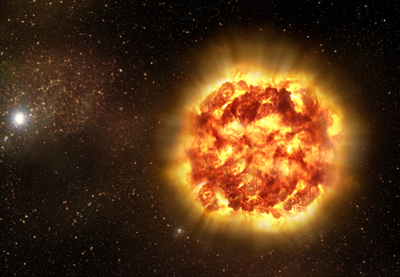Asymmetric ashes
Thursday 30 November 2006

Using observations of 17 supernovae made over more than 10 years with ESO’s Very Large Telescope and the McDonald Observatory’s Otto Struve Telescope, astronomers inferred the shape and structure of the debris cloud thrown out from Type Ia supernovae.
Their results strongly suggest a two-stage explosion process in this type of supernova : they find that the matter ejected by the explosion shows significant peripheral asymmetry but a nearly spherical interior, most likely implying that the explosion finally propagates at supersonic speed.
Models have suggested that the clumpiness is caused by a slow-burn process, called deflagration, and leaves an irregular trail of ashes. The smoothness of the inner regions of the exploding star implies that at a given stage, the deflagration gives way to a more violent process, a detonation, which travels at supersonic speeds - so fast that it erases all the asymmetries in the ashes left behind by the slower burning of the first stage, resulting in a smoother, more homogeneous residue.
See online : http://www.eso.org/outreach/press-r...

